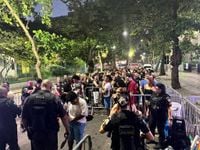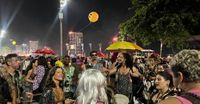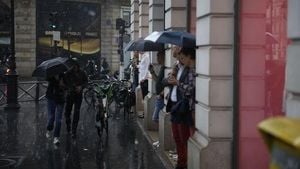As the sun shone brightly on Copacabana beach, the anticipation for Lady Gaga's much-anticipated performance on Saturday, May 3, 2025, was palpable. The event, part of the "Todo Mundo no Rio" project initiated by the city of Rio de Janeiro, aimed to bring world-class artists to perform for free on the city's iconic beaches. Following the massive success of Madonna's concert in 2024, which drew 1.6 million attendees and generated R$ 300 million for the local economy, the city sought to replicate that achievement with Lady Gaga.
This year, the investment for Gaga's show reached R$ 92 million, a 53.3% increase over Madonna's R$ 60 million budget. The funding sources were diverse, with R$ 15 million each contributed by both the State Government of Rio de Janeiro and the city hall, along with sponsorships from major brands like Corona, Santander, and LATAM. The show was expected to attract over 1.6 million fans and generate R$ 600 million for the economy, significantly boosting local businesses.
As fans began to gather hours before the concert, the atmosphere was festive. A group called "Pizza da Gaga" organized a Carnival block, complete with glitter and samba music, to celebrate the occasion. Carolina Fortes, a participant, noted, "The monsters always do this. There was a similar gathering for Madonna. It started at 3 PM, leaving from the Hilton Hotel to the stage, and now it's coming to an end." This spontaneous celebration reflected the deep connection Gaga's fans have with her music.
By the morning of the concert, Copacabana beach was already bustling with activity, as thousands flocked to the sands, eager to witness what was billed as Gaga's largest performance to date. The event was set to kick off at 21:45 and was expected to last approximately 2.5 hours, featuring five distinct acts that would showcase various phases of her illustrious career.
To accommodate the massive crowd, the production team brought an impressive 70 tons of equipment, including a stage that was 50% larger than the one used for Madonna's show, standing 2.2 meters above the sand. Sixteen LED towers, each standing 9 meters tall, were strategically placed along the beach to ensure that even those far from the stage could enjoy the performance. Additionally, 30,000 liters of free water were provided by the Companhia Estadual de Águas e Esgotos (Cedae) to keep attendees hydrated, and over 5,000 police officers were deployed to ensure safety.
Local businesses were optimistic about the economic impact of the concert. The average visitor was expected to spend around R$ 515.84 per day, with international tourists projected to spend even more at R$ 590.40. For locals, the daily expenditure was estimated at R$ 133.60. The hotel occupancy rate in Rio was already high, at 86.6%, with Airbnb searches increasing by 2.5 times compared to the same week last year.
Despite some criticism regarding the allocation of public funds for such events, Mayor Eduardo Paes defended the investment, stating, "Yes, I'm going to spend public money on Lady Gaga. I spent it on Madonna too. You know why? Because it fills all the hotels and restaurants." This sentiment echoed the broader belief that such high-profile concerts could serve as a catalyst for economic revitalization.
As the time drew closer for Gaga to take the stage, the excitement among fans reached a fever pitch. The show was set to feature a mix of her biggest hits, including "Poker Face," "Bad Romance," and new tracks from her latest album, "Mayhem." The broadcast of the event was scheduled to start at 21:15 on platforms such as Multishow and Globoplay, ensuring that fans unable to attend in person could still experience the spectacle.
In the hours leading up to the concert, organizers encouraged attendees to use public transportation, particularly the metro, to avoid traffic congestion. They also advised against entering the ocean at night due to increased drowning risks. With mild temperatures expected and minimal chances of rain, conditions seemed ideal for a night of music and celebration.
As the sun began to set over the horizon, casting a golden glow across the beach, the stage was set for what could become one of the most memorable nights in Rio de Janeiro's history. The anticipation of witnessing Lady Gaga perform live, in front of a record-breaking crowd, was a dream come true for many. With the city buzzing with energy and excitement, all eyes were on Copacabana, ready to embrace the magic of live music once again.
In summary, Lady Gaga's concert on May 3, 2025, in Copacabana represented not just a significant cultural event but also a potential economic boon for the city. As Rio de Janeiro continues to navigate the complexities of post-pandemic recovery, such high-profile performances could play a crucial role in revitalizing the local economy and fostering a sense of community among residents and visitors alike.






